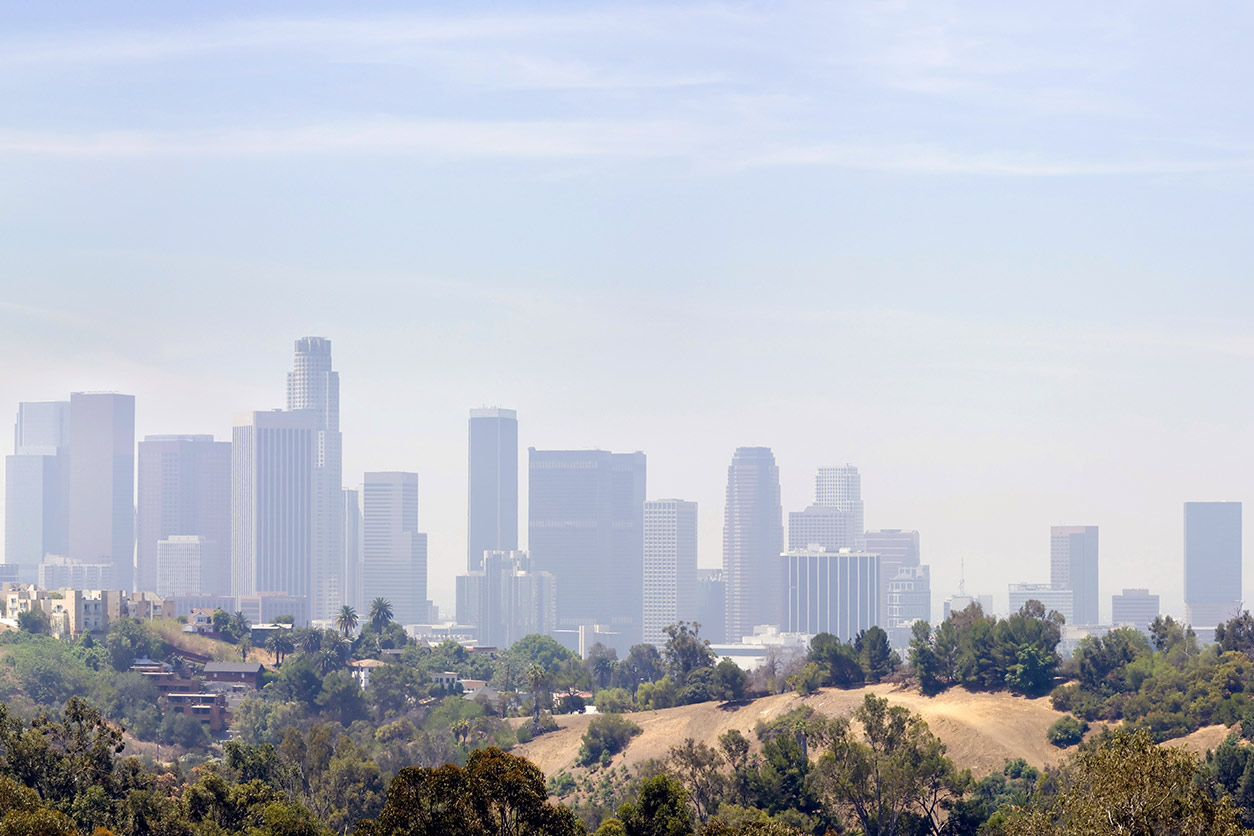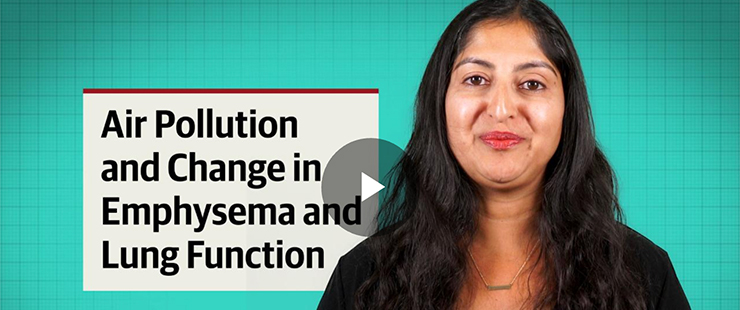Long-term exposure to air pollution was linked to increases in emphysema between 2000 and 2018, according to a study funded by NIEHS and the National Heart, Lung, and Blood Institute (NHLBI). The findings appeared Aug. 13 in JAMA.
 This study adds evidence linking air pollution and emphysema, a lung disease that gets worse over time.
This study adds evidence linking air pollution and emphysema, a lung disease that gets worse over time.Emphysema, usually associated with smokers, is a chronic disease in which lung tissue is destroyed and becomes unable to effectively transfer oxygen.
“Air pollution is a significant public health concern around the world,” said Gwen Collman, Ph.D., director of the NIEHS Division of Extramural Research and Training. “It’s been a priority of NIEHS research for many years, so it’s great when we can accelerate our efforts by joining with other NIH [National Institutes of Health] institutes in supporting research on lung disease.”
“These findings may offer one explanation for why emphysema is found in some people who never smoked,” said James Kiley, Ph.D., director of the NHLBI Division of Lung Diseases. “The study’s results, duration, and timing offer insight into the long-term effects of air pollution on the U.S. population.”
A long-running, large-scale study
The study included more than 7,000 men and women from the Multi-Ethnic Study of Atherosclerosis (MESA). Researchers followed individuals with emphysema, analyzing more than 15,000 computed tomography (CT) scans and lung function tests from 2000 to 2018.
Over the same period, MESA carefully tracked air pollution in the varied metropolitan regions of Winston-Salem, North Carolina; St. Paul, Minnesota; New York City; Baltimore; Chicago; and Los Angeles. The exposure work received support from the U.S. Environmental Protection Agency.
Clear and consistent associations between long-term exposure to air pollutants and progression of lung disease were found across the six localities.
 Traffic-related air pollutants, which are contributors to ozone, were identified as affecting emphysema. Los Angeles, shown here, was one of the cities in the study.
Traffic-related air pollutants, which are contributors to ozone, were identified as affecting emphysema. Los Angeles, shown here, was one of the cities in the study.“The combined health effect of multiple air pollutants — ozone, fine particles known as PM2.5, nitrogen oxides, and black carbon — was greater than when the pollutants were assessed individually,” said Bonnie Joubert, Ph.D., a scientific program director at NIEHS. “With the study’s long-running duration, repeated CT scans allowed analysis of changes in emphysema over time.”
Understanding and controlling emphysema
 Kaufman is shown giving a plenary talk about air pollution and disease at the 2016 NIEHS Environmental Health Science FEST. (Photo courtesy of Steve McCaw)
Kaufman is shown giving a plenary talk about air pollution and disease at the 2016 NIEHS Environmental Health Science FEST. (Photo courtesy of Steve McCaw)“Rates of chronic lung disease in this country are going up and increasingly it is recognized that this disease occurs in nonsmokers,” said the study's senior co-author, Joel Kaufman, M.D., from the University of Washington. “We really need to understand what’s causing chronic lung disease, and it appears that air pollution exposures that are common and hard to avoid might be a major contributor.”
People with emphysema have difficulty breathing, along with a persistent cough and phlegm. It makes physical and social activities difficult, creates work hardships, and may result in detrimental emotional conditions. Disease development can be a slow, lifelong process. Although emphysema is not curable, treatments help manage the disease.
Citation: Wang M, Aaron CP, Madrigano J, Hoffman, EA, Angelini E, Yang, J, Laine A, Vetterli TM, Kinney PL, Sampson PD, Sheppard LE, Szpiro AA, Adar SD, Kirwa K, Smith B, Lederer DJ, Diez-Roux AV, Vedal S, Kaufman JD, Barr RG. 2019. Association between long-term exposure to ambient air pollution and change in quantitatively assessed emphysema and lung function. JAMA 322(6):1–11.
(Carol Kelly is managing editor in the NIEHS Office of Communications and Public Liaison.)










